8 good reasons to chop down a tree PLUS what to do with a tree once it’s down
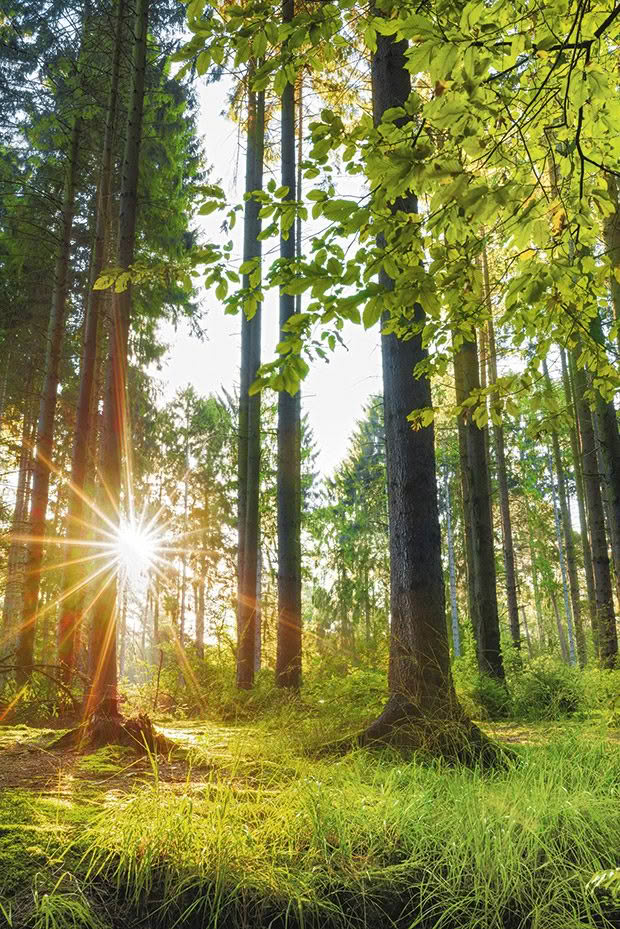
The best time to plant a tree is always today, but when it’s best to chop one down takes more consideration.
Words & images: Sheryn Dean
It’s important to consider all the ramifications of chopping down a tree. It’s a decision that can take years to undo. But if the verdict is it must go, then the sooner, the better. Procrastination only allows the unwanted tree to get bigger, and in some cases, more dangerous.
1. Old age
All trees have a life-span. What exactly that is can be hard to determine. Exotic trees in New Zealand’s climate often grow a lot quicker than in their native zone. It’s reasonable to expect that their life expectancy is also a lot shorter.
That’s a problem if you’re consulting Google on the expected lifespan of a certain species. The results are often irrelevant, if the information is available at all, as your growing conditions and climate can make such a big difference.
Poplars have an expected lifespan in NZ from 30-70 years. A seedling-grown pear has lived to over 400 years old in the northern hemisphere, but a grafted pear tree may only live 40 years. The life of a grafted peach can be quite short, just 10-15 years.
Most species are still too newly-arrived in NZ for us to know how long they will live. Some trees will outlast you. Others may be nearing the end of their life and can be rotting inside, or they are past being productive.
In the natural order of life and death, they will eventually topple, usually during a storm, which will make the clean-up difficult and/or messy. They’ll have no qualms about falling on houses or fences or other expensive infrastructure when they go.
2. Take out the trees before you build
Dropping a tree in an open space is relatively simple. Felling one that is close to buildings, retaining walls, garden beds, and fences is time-consuming and costly.
If you are building, look at the viability of any trees nearby before you get started, particularly those on the windward side of any proposed buildings.
With large trees, there’s the potential for damage if they fall, shade issues, and leaves in guttering.
With younger, smaller trees, think about what their effect will be in 5-10 years time. Assess trees before you construct new fences. Getting the gear in and any debris, firewood, or mulch out is a lot easier if you have direct access, versus having to drive down and around a long fence line.
I know people who have rushed in to fence their new property, only to decide to fell trees and have to fence it all over again.
3. Root damage
The roots of a big tree are extensive. They can damage drains as they seek moisture, crack footpaths and foundations, and suck nutrients out of the ground to the detriment of gardens or plants nearby.
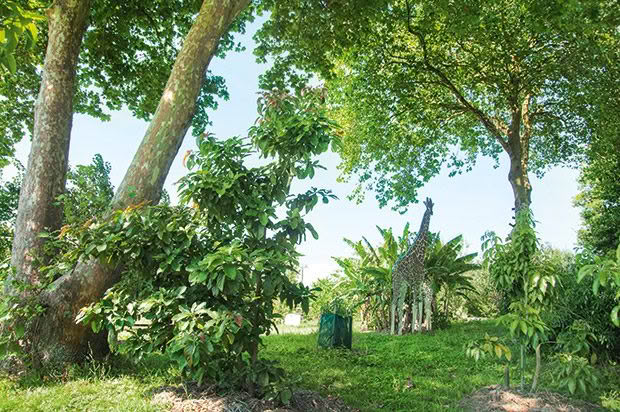
I planted my frost-tender trees under the protection of two established plane trees, but I now want them gone. They are dominating my plantings due to root competition and excessive shade. Felling them whole would damage my precious avocado and apricot trees. Unfortunately, arborists have quoted me over $5000 to dismantle them in pieces.
Shelterbelts are notorious for robbing adjoining orchards of nutrients. Many commercial orchardists ‘root rip’, cutting roots underground just like they trim the branches above.
You can try to mitigate the root spread by coppicing the tree (if it is a suitable variety), and mulching in the root zone. A small canopy will keep the roots small and mulching will encourage them to stay close, rather than spreading to seek out new nutrients.
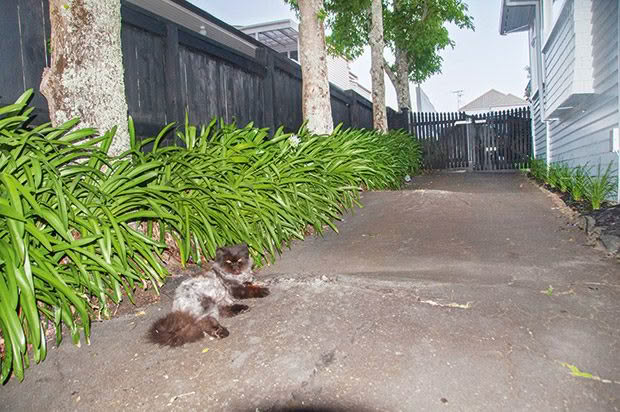
Roots have created speed bumps under this expensive tarmac driveway.
Some species have invasive roots, extending 60m+. If they’re damaging valuable infrastructure, permanent removal may be the best option.
4. Firewood
If you have planted trees for firewood, it’s important to regularly assess their growth and fell them before it becomes a herculean task. Replacements and remaining trees from a selectively-logged stand grow quickly.
It is much easier to fell and cut up two smaller trees than one large one. I know from personal experience, if you leave firewood trees to get too big, it creates two annoying problems:
• you’ll cut down one tree and have more firewood than you need for a season (or two);
• the remaining trees will get even bigger while you use it up.
It quickly escalates into an expensive problem as trees become too big for you to chop down and cut up yourself.
5. Trees causing neighbourly disputes
People have a tendency to plant trees along boundaries, which means roots, branches and leaves can often affect neighbours.
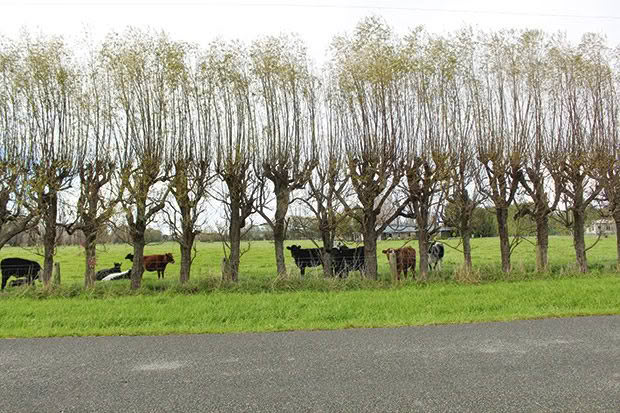
Coppiced poplars still provide shade but don’t get to unmanageable heights.
It’s a good idea to talk to your neighbour to ensure a tree or trees are not causing them problems. If they are, do something about it. If ignored, tree problems can sour neighbourly relations.
Neighbours have the legal right to trim overhanging branches and roots – which may not be in the best interests of your tree – and to put trimmings back onto your property or ask you to remove them.
6. The useless trees
Some may argue there is no such thing as a useless tree. But if sun and space are limited, it can be sensible to remove an unproductive tree and plant a replacement, especially in the orchard.
I highly recommend pruning off grafted nectarines and peaches that aren’t pulling their weight at ground level. They are a short-lived tree and are quickly replaced.
Apricots live a bit longer (40 years+) but may only produce fruit for 20-25 years. They seem to take longer to start producing so think carefully before getting rid of one.
Apples and pears can live to a grand old age, but a replacement will bear fruit quite quickly (3-4 years).
If replacing apples, pears, plums or cherries, don’t re-plant the same species in the same spot. No-one is quite sure why, but Specific Replant Disease will inhibit the replacement tree from growing.
Even if you are planting another species, be aware the removed tree will have used up a lot of the available nutrients in the ground which will need to be replaced.
7. Trees & power lines
If your tree poses a risk to a power network, it needs to be trimmed or removed. You may receive a warning notice requiring you to do this from the local lines company.
If a tree is within 4m of a power line, only an approved professional arborist can work on it; if it is felled incorrectly, it could take out the power network.
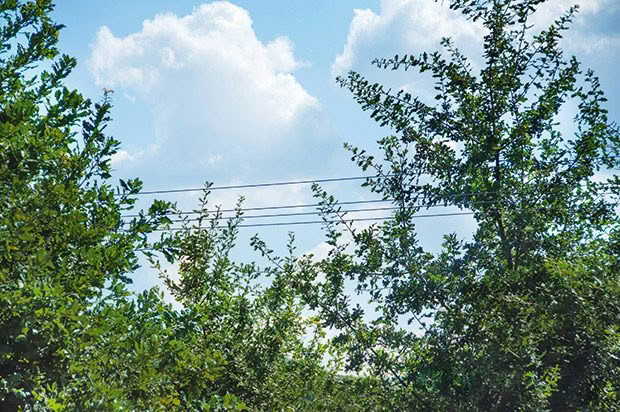
You may need to pay an aborist if trees are too close to power lines.
Trees must be trimmed so they are clear of lines (the distance is dependant on the line’s voltage). But this will be an ongoing cost, so it’s usually logical to remove the tree.
If your trees are close to power lines, contact your lines company first. You can find the lines company for your region here.
Auckland lines company Counties Power has a useful guide on the legalities of trees near power lines.
8. Big gum trees
I have visited a lot of lifestyle blocks where the gum trees, planted for firewood, are now a serious and costly problem. Gum trees naturally drop branches without warning, often up to half the diameter of the trunk.
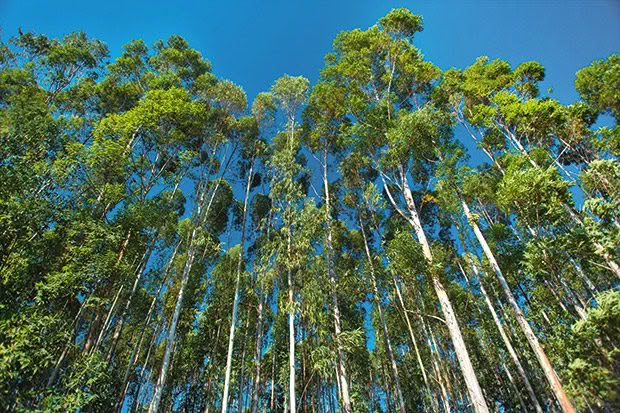
Some varieties are known as ‘widow makers’ by Australian emergency services. This is due to the large number of people who are seriously injured or killed by falling branches while sheltering under them during storms.
If you are planting gum for firewood, watch its growth and harvest while it’s still easily manageable, even if it’s far short of the tree’s potential height.
CHECK BEFORE YOU CHOP
You will always be responsible for all maintenance of trees on your property, but you don’t always have the right to remove, or even prune certain trees.
Check with the local council on whether a tree or trees on your block are protected by law. Excessive shading, blocked views, messy autumn yards, and clogged guttering are all valid reasons for a tree’s removal.
But assess the good points before you make the call. Privacy, sound absorption, shade, shelter, bird habitat, children’s play zones, and the aesthetics and interest of a mature tree will take years to replace.
WHAT TO DO WITH A TREE ONCE IT’S DOWN
The simplest solution is to get a mulching company in to chip the remains and remove them. If not, you can:
• mill trunks into timber;
• chop branches for firewood ;
• chip leaves and twigs into mulch yourself.
However, milling timber is not always as simple or as profitable as it sounds.
THE TRUNK
The timber value of your trees may not be very high. Some may be of interest to a specialist mill if it is the right species and of good quality. But often, the labour and transport cost will out-value the timber so getting it carted away for free may be the best deal available.
You can contract a mill to cut and dry the timber for you and prepare it for a woodworker to turn into something special, but this is often expensive.
Trunks can be cut and split for firewood, but this can be costly if an arborist does it. Research the timber and see if it is worth the time and effort. Some common trees, like poplar and willow, are – in my opinion – not worth any effort. I find the only heat you generate from this wood is when you cut, stack, and cart it.
Another option is to use it in the garden. I have a chestnut log as a garden edge on a sloping site. It is a rustic and effective retaining wall and weed boundary and occasionally grows the odd mushroom. It tried to sprout a few leaves in the first couple of years which I removed. It’s now happily dead, and I expect it to last many more years before it rots away.
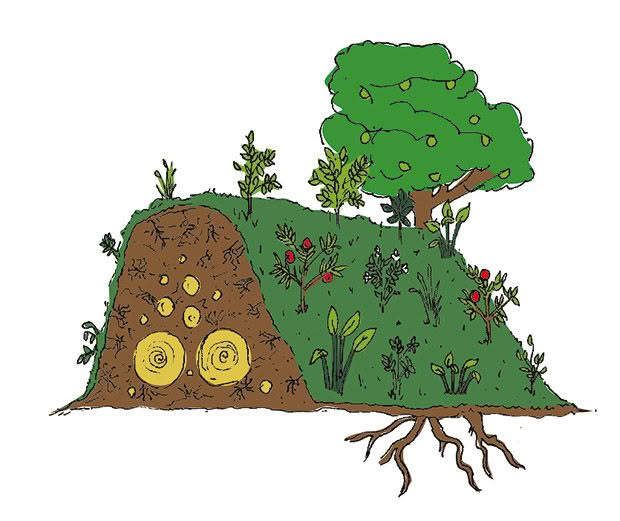
A hugelkultur bed after two years.
We got a contractor to bury a willow tree when we first arrived here, but it wasn’t a good idea. The extensive regrowth is still emerging – and being eaten up by our cattle – 12 years later. My father tells me some poplar I just buried will do the same, but since this is in a paddock, I consider it fodder.
Another option is to build hugelkultur (hoog-el-cull-tour) garden beds, a permaculture method that utilises the carbon value of the wood. A pile of logs and branches is placed in a stack, with layers of grass and leaves stuffed in the gaps. It is covered with topsoil and then planted up as a garden. The logs rot, hold water, and slowly decompose.
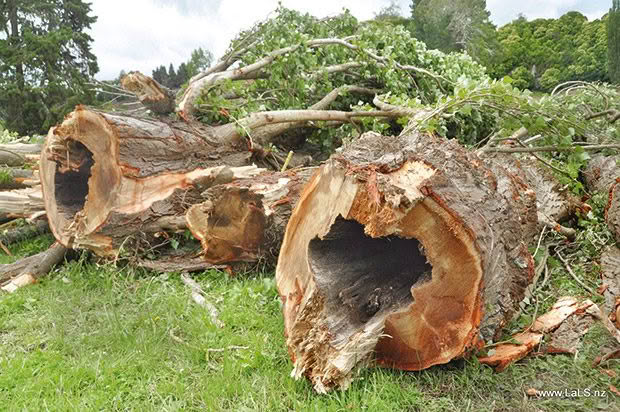
These old poplars were rotting from the inside-out.
I am about to experiment with this method after a friend raved about it. I am letting the poplar logs weather (and die) for a summer first, so I don’t have regrowth.
The positive thing about burying a log is you are sequestering carbon from the atmosphere and improving your soil, a much more environmentally friendly process than burning it.
BRANCHES
These are good for firewood; just cut to length. Some bark is fire-retardant. Whole logs can take a little longer to catch fire. Splitting them means they will still be good for burning.
I like to keep any apple, plum or cherry branches for use in the smoker. They produce a far nicer flavour than manuka smoke. The problem is converting the branches to the right sized chips. If anyone has any ideas on how to do this, please let me know.v
Many kinds of woods make amazing barbecue, pizza oven or spit fuel for the same aromatic reason, imparting a delicious flavour to your cooking. Cherry, yew, and maple are good options.
Branches can also be used to make retaining walls or to support the sides of tracks or built-up areas. My father used to do this on the steep hills of his farm. He’d dig some uprights into the ground, pile the branches up horizontally behind them, then cover the entire lot with soil.
This would be done over time as prunings and dirt became available. By the time the branches had rotted, the soil had consolidated, and a level stock track or platform had formed behind it.
BIOCHAR
Now that I have several huge piles of forestry slash I don’t want to burn it and release all that carbon into the atmosphere. A lot of it is lying on the hillside where it fell and will be left to rot in place.
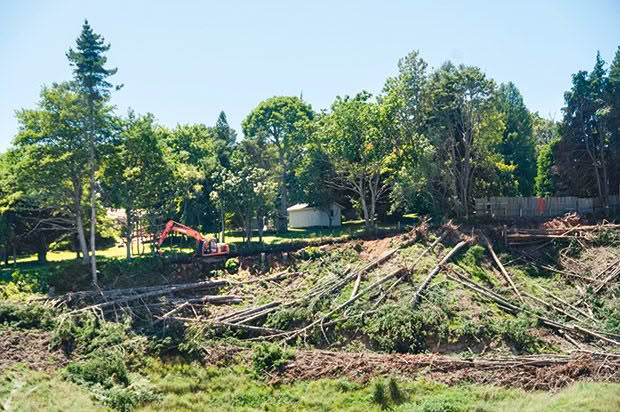
Where it needs to be removed, it has been piled up. When it’s dry, I intend to turn it into biochar. This is basically carbon charcoal that is an excellent additive to the soil.
The wood is burnt in a low-oxygen environment, which releases the volatile gases but retains the carbon. Friends who have made biochar on a smaller scale report adding it to their garden has greatly improved the soil.
TWIGS AND LEAVES
Many leaves are good fodder for animals. Some are poisonous, so always check first; if you’re in doubt, don’t feed it out.
Many leaves and bark contain a range of trace nutrients beneficial to animals. My cattle gorge themselves on chestnut, paulownia, willow, and oak, but will turn their noses up once they have had enough.
Leaves contain nitrogen, and the twigs and small branches contain carbon. When chipped (or shredded), they make great, fast-decaying compost, or you can use them under trees or in gardens as a mulch.
Be careful if the ratio of branches to leaves is too high as too much carbon will suck the nitrogen from the soil and even kill small plants.
SHERYN’S TIPS
Take a tree down, or at least call an arborist to assess it, if:
• you can see holes in the trunk;
• branches frequently drop with wind;
• parts of it look dead;
• a similar-sized tree nearby that was probably planted at the same time topples.
SHERYN’S (TONGUE-IN-CHEEK) TIP
Try a little shock treatment: Chainsaw shock is caused when you walk past a tree with the chainsaw running. Try to look threatening. With particularly stubborn trees, prune it using the chainsaw.
HOW TO TAKE OUT A FOREST
We recently purchased a neighbour’s paddock which contained 2ha of radiata pine. It was unpruned and unmanaged, but still able to be harvested.
We wanted it gone. I contacted six logging contractors operating in our area to get a quote. Four of the six came and inspected the trees, and two got back to us offering to do the job.
One of them – Professional Harvesting Systems (PHS) – provided a folder giving a breakdown of expected harvest, grades, current log price (which fluctuates), harvesting cost, cartage costs, management fees, and the total return to us. They sat down with us and discussed how it would all work, and what their requirements and responsibilities were.
The other – All Terrain Chipping (ATC) – were prompt, efficient, and more laid back. Their email quote included the expected total return, their transporting and earthworks requirements (cheaper), and the overall estimated return to us was 60 percent more.
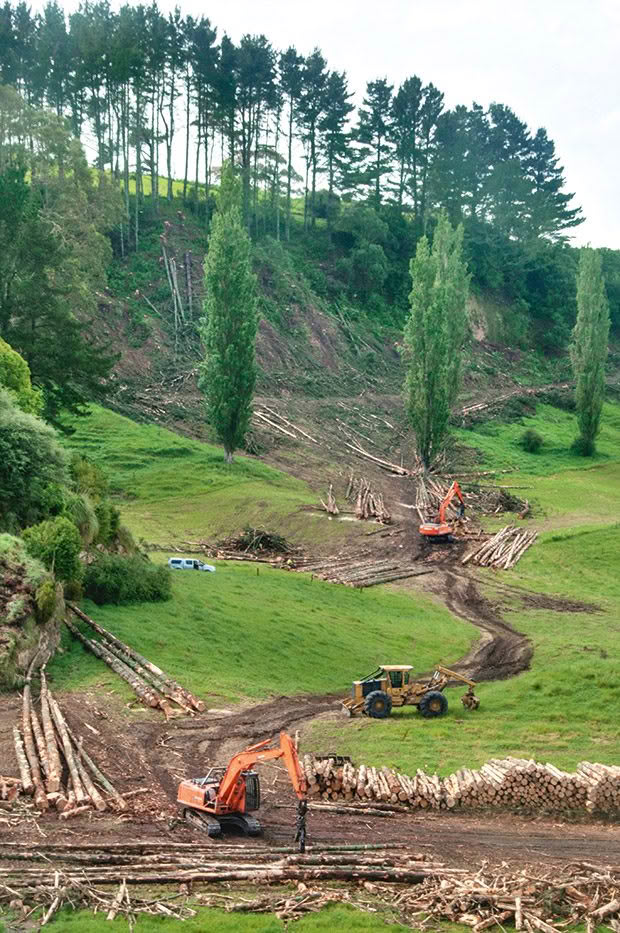
The removal of an unkempt pine plantation on our new block wasn’t hugely profitable.
How that return was calculated was unclear, but it was a big difference. They then offered us a choice of a lump sum payment or an estimated return based on log price, less costs. We decided to go with them and take the estimated return. PHS offered to revise their figures, but we stuck with our decision.
ATC took 12 weeks to get on site, instead of the estimated four, some of that delay due to bad weather. In the end, the establishment costs were the same as PHS quoted, but we got in our own digger.
They did a fantastic job of cleaning up and paid us a lump sum.
Their payments were late, calculations unclear. Despite repeated requests for clarification they are still a total mystery but were within projections.
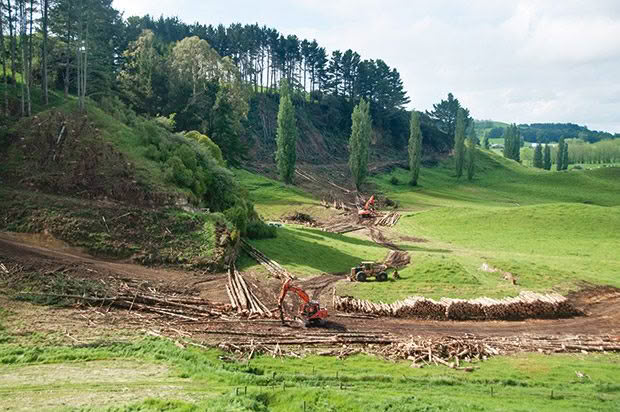
While they destroyed a few more fences than we anticipated, they made up for it by removing some other trees that we didn’t want. The income paid for the digger work, new fences and replanting. It wasn’t a wonderfully profitable exercise, but we have ended up with good quality, stock-proof fences.
There’s also space to plant a mixed forest of productive trees to provide fodder for our pigs, a much more interesting selection than a monoculture clump of pine.
GET TRAINING
If you want to learn how to use a chainsaw to fell and chop up trees yourself, you need proper training. Inforest Training (nationwide) is one of several companies that run 1-2 day training courses covering servicing and safe operation of a chainsaw.
Love this story? Subscribe now!
 This article first appeared in NZ Lifestyle Block Magazine.
This article first appeared in NZ Lifestyle Block Magazine.
